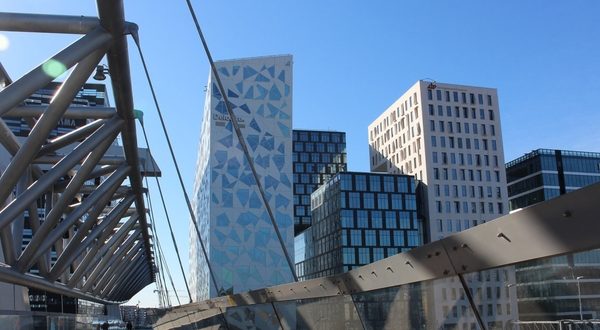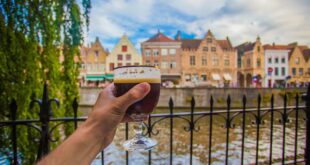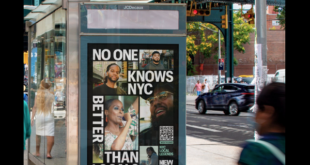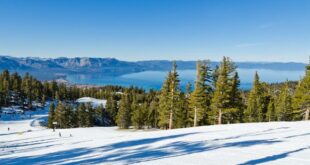[ad_1]
For the past few years, it’s been all about nature in Iceland.
Hot springs. Northern lights (you can see them in Norway, too). Wild horses. You name it.
Norway is coming in hot, though, with an exploding arts and culture scene, a new twist on traditional Scandinavian food and, of course, some of the best coffee. Besides, the ticket to get there from the U.S. is pretty affordable right now. I spent five days in Oslo, Norway’s capital city, and really got to experience Norwegian culture firsthand.
Named one of the best hotels in Northern Europe by Conde Nast Traveler, The Thief is a five-year-old, five-star luxury hotel that boasts amazing food, drinks and art. The bathroom floors are heated (brrrr, no more) and although the motion-detecting lights in each room can take a little while to get used to, everything else oozes a cool lavishness, from Carita toiletries and custom-designed wool slippers, wool blankets and plush bathrobes to sleepytime tea at turndown and even socks, underwear and condoms in the mini bar in each and every room.
Have a spa appointment, but don’t want to venture outside or down to the lobby? A separate elevator that can be accessed on every floor connects the hotel to the 800-square-meter spa space, that includes a pool, sauna, steam room and hammam—as well as a small, minimalistic gym.
The Astrup Fearnley Museum of Modern Art, a contemporary art gallery situated right across from The Thief, showcases artists like Cindy Sherman (a temporary exhibition) and Damien Hirst (permanent collection). Designed by Renzo Piano, the structure cost nearly 90 million euros to build 25 years ago and combines a glass roof that lets in natural light with steel columns that mimic the look of sailboats in the harbor right outside the museum.
Give yourself an hour or two to peruse all that Astrup Fearnley has to offer, including the cafe and—always my favorite—the gift shop.
Bonus: Art borrowed from the museum’s collection is spread throughout The Thief’s lobby, restaurant, elevator and bar (Andy Warhol, Willem de Kooning, Damien Hirst) and anyone with a hotel key card has free access to visit Astrup Fearnley for a closer look at the exhibitions and collection.
Home to the Norwegian National Opera and Ballet, the Oslo Opera House is a sight for sore eyes. Architecturally stunning, the Opera House is the largest cultural building erected in Norway since the Roman Catholic cathedral, Nidaros, was completed around 1300. The building’s exterior is covered with Italian marble and white granite and one of its restaurants, which faces the Oslo Fjord, reaches the water’s edge at summertime. I saw Sigrid Strom Reibo’s interpretation of the Vincenzo Bellini opera, Norma, a show that was last staged in Oslo more than 100 years ago.
I’m not usually a tour kind of girl—I prefer exploring on my own—but when your time is limited in a country that’s so far from home, taking in as much as possible with someone highly knowledgeable about the city’s history isn’t a bad idea. OurWay Tours took us to the Viking Museum, the super-snowy wonderland where Olympic ski lift Holmenkollbakken is located, Frogner Park (home to the Vigeland sculpture installation) and more—all before lunchtime.
Switch up wine tasting (although every glass of European wine I had on this trip—including the most buttery, delicious Chardonnay—was to die for, wine is not a Norwegian thing) for coffee tasting at Tim Wendelboe and Fuglen.
Tim Wendelboe is a cozy little espresso bar with a roastery onsite in the hip Grunerlokka neighborhood. I drink a lot of coffee and the best cappuccino I’ve had, in a long time, was here. Not surprising considering it’s one of the best coffee shops in Norway, and maybe even the world.
Fuglen is a little more of a hangout spot, a coffee shop by day and cocktail bar by night. The shop has been open since 1963 and sells coffee and tea by the pound as well as your favorite cuppa, made just how you like it. Schedule a sip and spit (not kidding) so you can try all the espresso and coffee your palpitating heart can take while learning about the filter coffee method.
Last, but definitely not least, what some would argue is the most important part of any trip: what and where you eat. The food scene is bumpin’ in Oslo with ingredients like reindeer salami, beetroot and lots of fish—all native to the region; even cocktails are crafted with local foods like cloudberries, hazelnuts and even Brunost (a brown cheese, rarely seen elsewhere in the world besides Norway).
Get your experimental cocktail on, as well as a taste of housemade Aquavit, at Himkok, one of the world’s best bars. There’s also Torggata Botaniske, a botanical bar in the City Center, with a seasonal menu and hanging plants and vines galore. I’m still salivating over the warm, gooey bone marrow and bread at Sentralen (a restaurant and cultural experience), the butter chicken at Der Peppern Gror (an authentic Indian place, with a name that translates to “Go to Hell” or literally, “Where the Pepper Grows”) and the ever-changing sharing menu (also the natural, organic and biodynamic wines) at Smalhans.
Other restaurants you should check out on your trip include Hanami (sushi), Matthalen (an indoor food court with 30+ vendors) and Ett Bord (a family-style restaurant that encourages silencing your phones while dining and conversing communally).
[ad_2]You can read more of the news on source
 Travelsmart
Travelsmart



